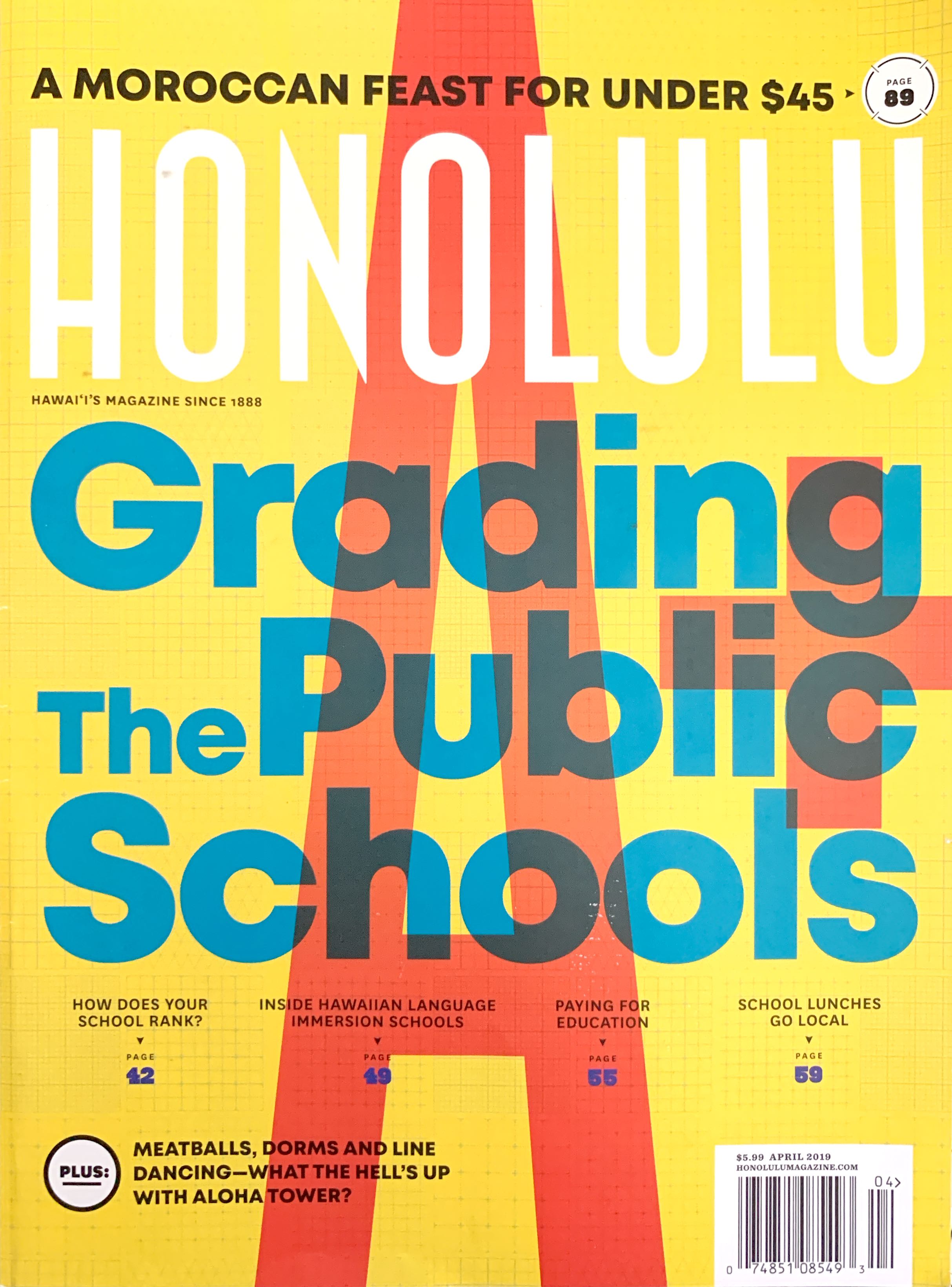In April, HONOLULU Magazine published its "Grading the Public Schools" issue, ranking public schools with letter grades from A+ to F.
While the magazine added some non-test categories such as abenteeism and school climate into its rankings, the bulk of them are based on math and English standardized test results, which don't accurately depict the learning environment at any school.
On April 26, Hawaii State Teachers Association President Corey Rosenlee met with HONOLULU Magazine Publisher Alyson Helwagen and Managing Editor Katrina Valcourt to discuss the HSTA's concerns. They discussed ways to de-emphasize test results and include important factors such as the percentage of students who qualify for free or reduced-price lunch, the number of teacher vacancies, and the number of emergency hires teaching in classrooms at each school.
Helwagen told Rosenlee during the meeting that the magazine is "committed to finding a more accurate way to show how our public school children are doing."
The magazine will publish a shortened version of the following letter from Rosenlee in its June issue.
An open letter to the editors of HONOLULU Magazine:
Please stop grading Hawaii's public schools.
Every year, you rank our schools with the reasoning that “it is important to know the basics of how our kids are doing.”
I would argue that this does just the opposite.
Your ranking is mainly determined by a standardized test called the Smarter Balanced Assessment (SBA). The problem is that the SBA, like many standardized tests, is highly correlated to the socio-economic status of the child.
According to your latest issue, “Grading the Public Schools,” only one of the top 10 high schools is a Title 1 school, which means its students qualify for free and reduced lunches. Nine of the bottom 10 are. The implication here is that wealthier children go to “good” schools and poorer children go to “bad” schools.
This simplistic view negates the hard work and dedication of both teachers and students at these schools, many of whom have achieved successes beyond the scope of just one test.
Yet HONOLULU Magazine continues its practice of publishing and ranking all schools, which pushes schools and teachers to waste time and energy on that test.
As a nation, we are trying to move away from high-stakes testing. In 2015, federal lawmakers got rid of the No Child Left Behind (NCLB) Act and replaced it with the Every Student Succeeds Act (ESSA). One of its provisions allowed states to identify only the bottom five percent of schools for intervention.
Hawaii’s Board of Education took full advantage of ESSA by not ranking every school and providing support, not punishment, to the bottom five percent. This paved the way for a more well-rounded approach to educating our keiki.
NCLB had a devastating impact on our classrooms. The emphasis on increasing math and English scores took precedence over every other type of learning. Now, we have the opportunity to do what we know is best for our keiki, to give them a well-rounded education that includes art, music, science, social studies and physical education.
By holding onto failed policies, HONOLULU Magazine is perpetuating the idea that the only things that matter are math and reading test scores. It hurts the ability of our teachers to provide diverse learning experiences for our keiki. Every teacher who is thinking of a great lesson in art and music over math and reading will be worried about embarrassing their school with a poor ranking in HONOLULU Magazine. How many great artists, musicians and scientists will we lose with this kind of thinking?
Meanwhile, Hawaii’s private schools go unranked, and are free to cater to the various learning styles and interests of their students.
In an online message, Superintendent Christina Kishimoto noted that your private schools issue “provides one spread after another with opportunities to learn about each school’s story, special programs and mission. If their performance data are mediocre, you’re not going to learn about it in this guide. You’re going to see lovely pictures and narratives about the private school experience and your questions answered about navigating the admission and payment processes.”
The Hawaii Department of Education intends to move away from standardized bubble tests to authentic assessments, or project-based learning. For example, students could work on science projects or essays to show their in-depth understanding. These assessments require more time, deeper thought and allow for a more engaged learning experience.
Hawaii’s public schools are changing, and changing for the better. HONOLULU Magazine needs to embrace these changes in education instead of promoting failed vestiges of the past.
The nation and our state have moved beyond grading public schools based on standardized testing.
It’s time for HONOLULU Magazine to do the same.
Corey Rosenlee
President, Hawaii State Teachers Association

